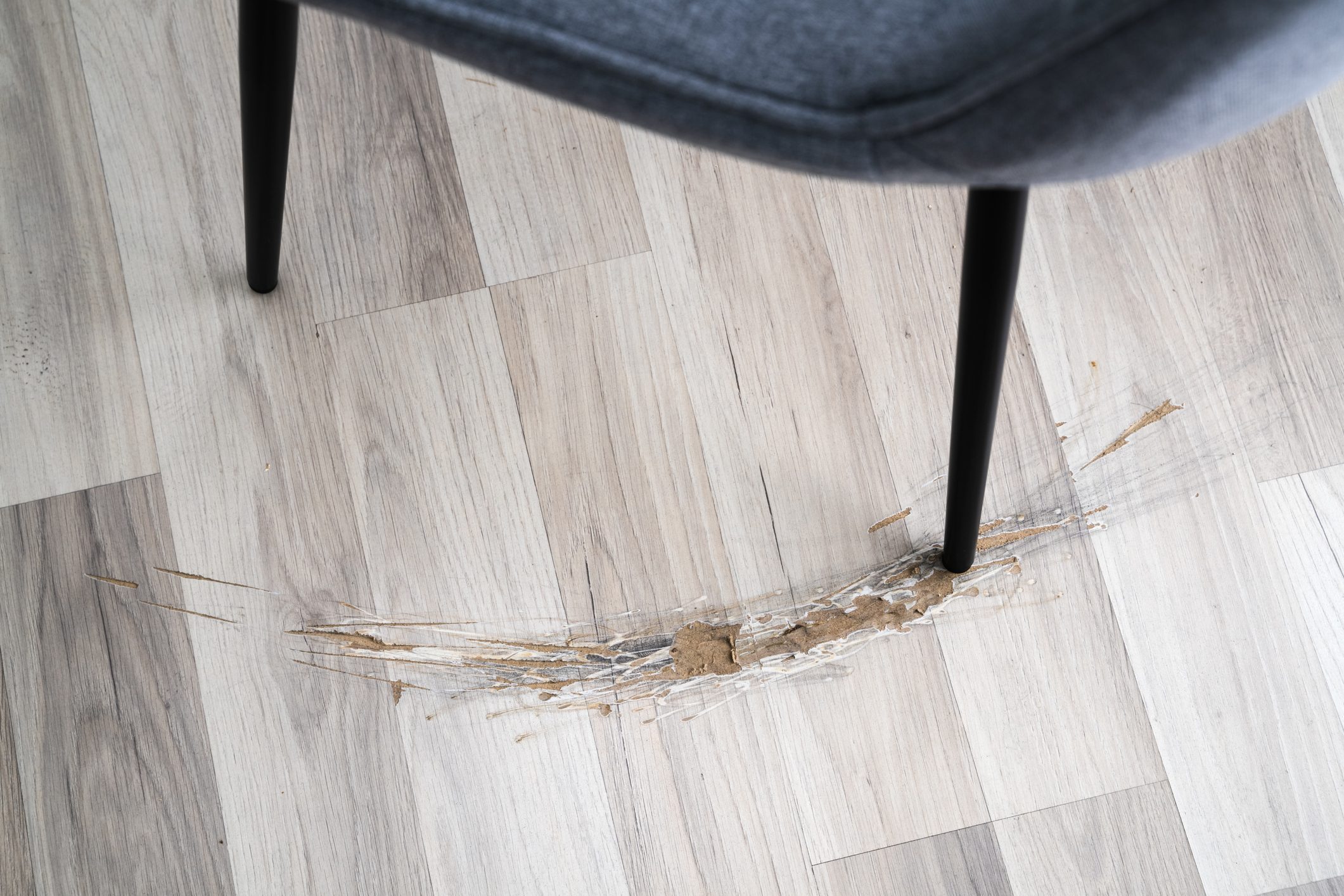With a few simple tools and an extra plank or two, you can repair vinyl plank flooring and tackle a range of fixes.
Our editors and experts handpick every product we feature. We may earn a commission from your purchases.Learn more.


With a few simple tools and an extra plank or two, you can repair vinyl plank flooring and tackle a range of fixes.
Our editors and experts handpick every product we feature. We may earn a commission from your purchases.Learn more.
Vinyl plank flooring (LVP) is a cost-effective, DIY-friendly option for those who want to mimic the look of natural wood. If you install vinyl plank flooring yourself and understand how the planks fit together, you can handle repairs yourself.
I’m a former residential carpenter with experience installing vinyl plank flooring installation and repair it. I collaborated with Nick Yahoodain, CEO of Advanced Builders and Contractors, to create this guide on how to repair vinyl plank flooring.
If you’re comfortable with DIY home improvement projects and you kept a few extra planks, you can fix vinyl plank flooring. Yahoodain recommends reading the back of the flooring box, if you still have it, or checking the manufacturer’s site to make sure you’re not voiding any warranties.
On This Page
Before we dive into repairs, it’s important to identify which issue you’re facing with your vinyl plank flooring. Here are the most common problems homeowners encounter.
If you’re facing issues due to installation, you might want to review some of the most common flooring installation mistakes first.
Multiple factors can cause planks to separate. Humidity levels or physical shifting due to high foot traffic can cause unsightly gaps between the ends of planks. This is more typically an issue with click-lock floors than with adhesive installations. Fortunately, this also is one of the easiest problems to fix.
Humidity and temperature changes can cause planks to contract, creating gaps along the sides. Improper installation can also be the culprit. Either way, these unsightly spaces can be easily fixed with a tube of putty.
Planks sometimes pop up and out of place. These unsightly exposed edges can catch on your shoes or socks, causing you to trip. If failed glue causes the pop-up, follow the steps below. If it’s a moisture issue warping the subfloor below, contact a flooring or plumbing pro to properly diagnose the cause.
Minor scratches on LVP flooring are often hard to see unless you look really closely. Deep scratches appear as white lines that can be an eyesore, especially on dark-colored planks.
Gouges and dents that penetrate several layers of the plank are notoriously difficult to repair. Because most vinyl plank flooring has a wood grain pattern, it can be difficult to make an invisible patch.
If you have extra planks, it’s probably easier to replace the plank than to patch the gouge. But if the gouge or dent is not too deep, or you don’t have spare planks, try filler putty.
Cupping occurs when the edges of the planks rise up, creating a concave “cup” shape. This is usually caused by moisture or temperature fluctuations.
Before attempting any flooring repairs gather these essential tools including a vinyl plank flooring repair kit. You can also explore these top tools for the DIY enthusiast for more helpful recommendations. According to Simple Flooring, you need utility knives, replacement planks, floor scraper, adhesive, cleaning supplies and safety gloves.
Scratches are often caused by chairs scraping across the floor, so make sure you always use felt floor protectors under your chair feet to minimize the need for scratch repair for vinyl floors.
Before attempting to repair cupped flooring, it’s important to find out exactly what’s causing it. If it’s high humidity or temperature fluctuations, the planks can potentially return to their original shape by running a dehumidifier or installing curtains to prevent direct sunlight exposure.
But if the issue is moisture damage underneath the flooring, you’ll likely need to replace the cupped planks. Contact a flooring installer or plumber to diagnose the cause.
Basic tools include a rubber mallet, putty knife, scraper tool, suction cup and appropriate repair materials such as color-matching putty and adhesive to help you figure out how to repair vinyl plank flooring.
Yes, according to Bubblegum Flooring, a flooring company in the Milwaukee area, replacing a single plank is a doable DIY project with the right tools and techniques. If a plank is damaged, replacing it can prevent the issue from spreading to other planks. But if the subfloor is causing the damage, replacing just one plank may not work and you will likely need to address the entire area.
To repair small scratches on vinyl planks, start by cleaning the area thoroughly, as dirt trapped in the texture can often be mistaken for a scratch. According to Easipay Carpets, for light scuff marks and minor scratches, try using a tennis ball and gently rub it over the scratch to buff it out. Also, you can use a clean eraser to remove the scratches. These simple DIY methods can help restore your vinyl planks without need to resort to more extensive repairs.